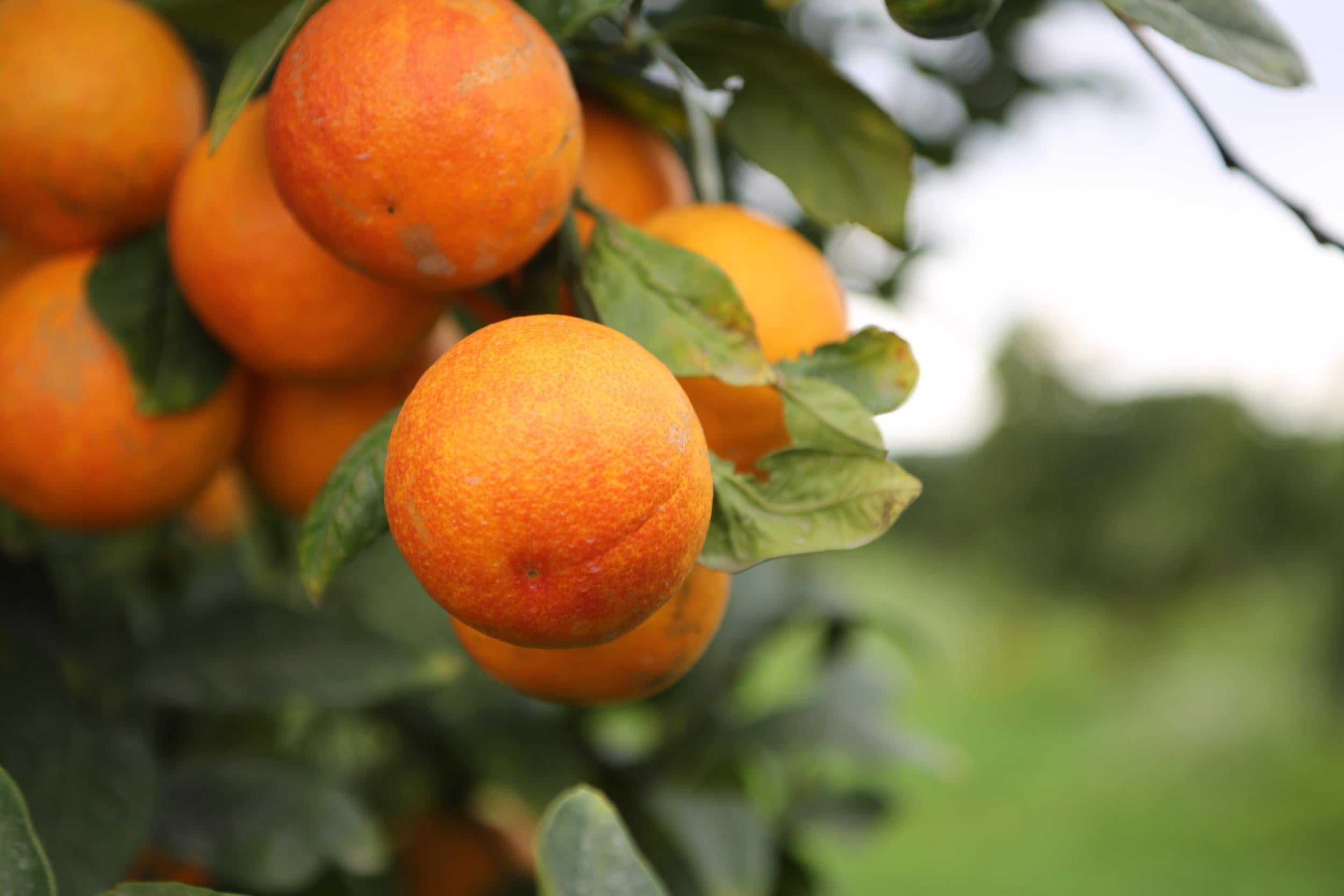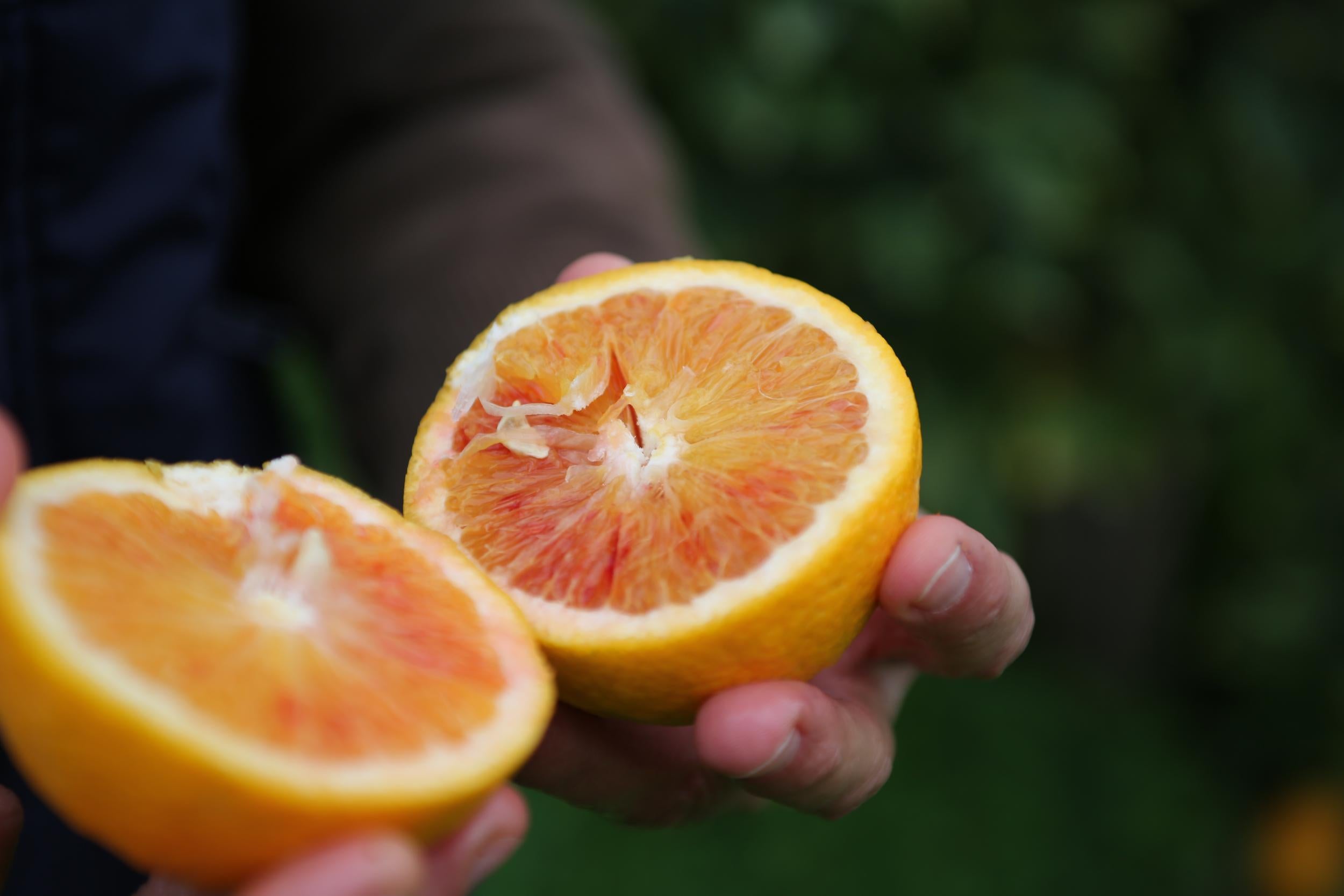How to make the most of the short and sweet blood orange season
Often confused with clementines, the red-fleshed fruit is ripe and ready to eat from December to May. Lizzie Rivera visits Sicilly to meet the first family to grow the fruit organically

Your support helps us to tell the story
From reproductive rights to climate change to Big Tech, The Independent is on the ground when the story is developing. Whether it's investigating the financials of Elon Musk's pro-Trump PAC or producing our latest documentary, 'The A Word', which shines a light on the American women fighting for reproductive rights, we know how important it is to parse out the facts from the messaging.
At such a critical moment in US history, we need reporters on the ground. Your donation allows us to keep sending journalists to speak to both sides of the story.
The Independent is trusted by Americans across the entire political spectrum. And unlike many other quality news outlets, we choose not to lock Americans out of our reporting and analysis with paywalls. We believe quality journalism should be available to everyone, paid for by those who can afford it.
Your support makes all the difference.The new year brings with it new and exciting opportunities – including the peak of the relatively short Blood Orange season.
Also more elegantly known as Blush Oranges, they are at their sweetest in January and February, because it’s the drop in temperature during the cold nights that follow warm, Mediterranean winter days that turn the citrus fruits a deliciously deep red or vivid orange with red streaks.
Typically only available until March, these winter specialities are tangy and juicy, and packed with Vitamin C. They make a delicious sticky sauce for warming winter main courses and a beautifully vibrant substitute for citrus desserts.
Blood oranges can be bought in most good supermarkets or greengrocers, but organic ones are harder to find, try Abel & Cole for the original Sicilian organic blood oranges, grown next to Mount Etna by the Borghese family.

How to spot a Blood Orange
Colour: orange, sometimes with reddish pink streaks
Skin: usually pitted and fairly thick-skinned, but sometimes smooth
Size: slightly smaller than a normal orange
Flesh: a deep red, or orange with red streaks

Roast chicken with blood oranges by Jassy Davis
Inspired by the fresh, crunchy fennel and blood orange salads they eat in Sicily in the New Year, this roast chicken is coated in a sticky, spicy blood orange sauce and roasted with fennel and blood oranges so you get a warm salad to serve alongside it.
Prep: 30 mins
Cook: 1 hr 45 mins plus resting
Diet: Gluten-Free
For the chicken
1.7kg whole, organic chicken
2 blood oranges
1 red chilli
2 garlic cloves
1 tbsp fresh rosemary leaves
50g honey
Sea salt
Freshly ground pepper
For the blood oranges and fennel
3 blood oranges
2 fennel bulbs
100g pitted black olives
2 tbsp olive oil
100g rocket
Put your chicken in a large roasting tin and let it come to room temperature. Heat your oven to 190°C/Fan 170°C/Gas 5.
Finely grate the zest from the oranges into a bowl. Squeeze in the juice. Halve the chilli, scoop out the seeds and white pith then mince it as finely as you can. Add to the bowl. Peel and grate or crush the garlic and add that too. Finely chop the rosemary leaves and stir them in with the honey and a pinch of sea salt and pepper.
Pour the blood orange sauce over the chicken, making sure you cover it. Loosely cover the chicken with foil, scrunching it to the sides of the tin to seal it. Slide into the oven and roast for 1 hr. While the chicken roasts, prepare the blood oranges and fennel. Quarter the blood oranges and pop them in a bowl. Halve the fennel bulbs. Slice each half into 4 wedges. Add to the bowl with the olives. Drizzle in the olive oil and season with salt and pepper. Turn to coat in the oil. Set aside.
Take the chicken out of the oven and remove the foil. Tuck the fennel, blood oranges and olives around the chicken. Return to the oven and roast the chicken and veg for 45 mins, till the veg are tender and sticky and the chicken is cooked all the way through. Transfer the chicken to a board and rest it for 30 mins, loosely covered with foil. Arrange the rocket on a platter and heap the fennel, orange and olives up on it. Drizzle any sticky juices from the chicken roasting tin over the top. Carve the chicken and serve with the salad.
Blood Orange & Saffron Curd by Sorrel Scott
A curd that infuses two of our favourite things – blood oranges and saffron – sign us up.
Prep: 1 hr
Cook: 2 hrs plus cooling
Makes: approx. 600ml
Large pinch saffron threads
250ml blood orange juice (approx. 3 oranges)
250g caster sugar
200g unsalted butter
8 egg yolks
To make the curd, place the saffron threads in a small bowl. Cover with 1 tbsp boiling water and leave to infuse. Place the remaining curd ingredients into a glass bowl. Add the saffron threads and soaking water. Mix together.
Put the bowl over a pan of simmering water (take care not to let the bottom of the bowl touch the water). Place on a gentle heat and cook till the butter has melted and the curd coats the back of a spoon. This can take 20-30 mins. Stir regularly. Pour the thickened curd into a couple of sterilised jars. Leave to cool then store in the fridge for up to 2 months.
Lizzie Rivera is the author of ethical lifestyle website bicbim.co.uk
Join our commenting forum
Join thought-provoking conversations, follow other Independent readers and see their replies
Comments